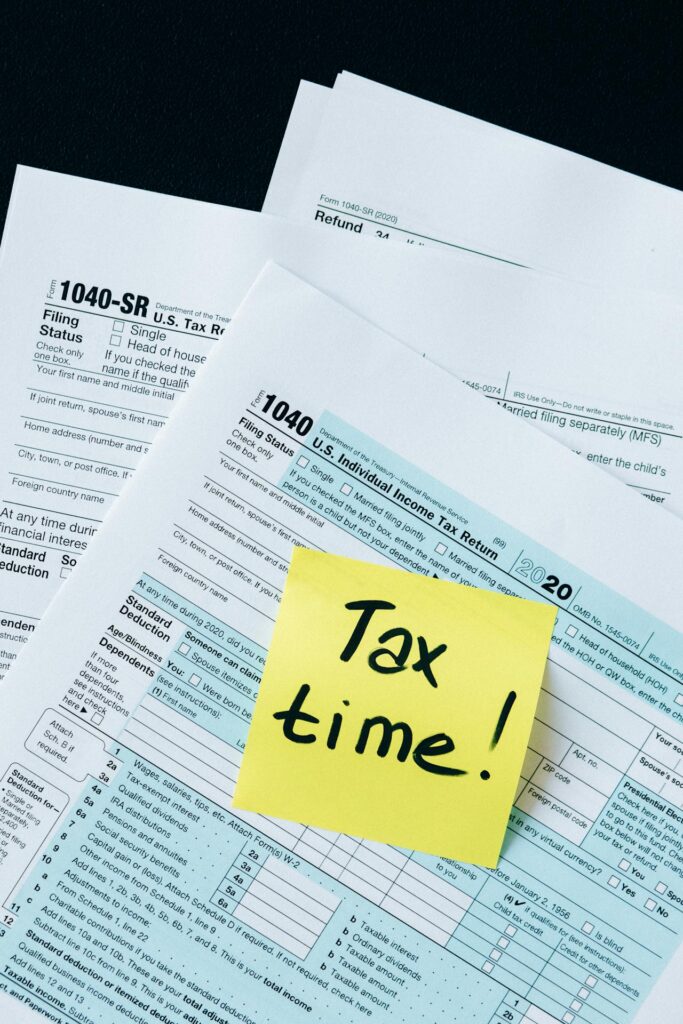
Capital Gains Tax: A Guide for Investors
Introduction to Capital Gains Tax
Capital Gains Tax (CGT) is a tax levied on the profit realized from the sale of a non-inventory asset. These assets typically include stocks, bonds, precious metals, real estate, and property. It’s important to note that capital gains tax is only triggered when the asset is sold, not while it’s held by an investor.
What Triggers Capital Gains Tax?
A capital gain occurs when you sell an asset for more than you paid for it. This difference between the sale price and the purchase price is known as the ‘capital gain’, and it’s this gain that is subject to tax.
Why is Capital Gains Tax Important?
Capital gains tax plays a crucial role in investment decisions. It can significantly impact the net return on an investment, making it a critical consideration for investors. Understanding how this tax works can help investors make informed decisions about when to buy or sell assets.
Capital Gains Tax and the Economy
Capital gains tax also has broader implications for the economy. It can influence investor behavior, affect asset prices, and play a role in wealth distribution. Therefore, changes in capital gains tax policy are often a topic of debate among policymakers and economists.
In the following sections, we’ll delve deeper into the different types of capital gains, how they’re calculated, and strategies for minimizing capital gains tax. We’ll also explore the impact of capital gains tax on investment decisions. Stay tuned!

Types of Capital Gains: Short-Term vs Long-Term
Capital gains are categorized into two types based on the duration the asset was held: short-term and long-term. The distinction between these two types is crucial as they are taxed at different rates.
Short-Term Capital Gains
Short-term capital gains are profits from the sale of an asset that was held for one year or less. These gains are generally taxed at the same rate as your ordinary income. This means that the tax rate can vary widely depending on your overall income level.
Long-Term Capital Gains
Long-term capital gains are profits from the sale of an asset that was held for more than one year. The tax rates for long-term capital gains are typically lower than for short-term gains, making it financially beneficial in many cases to hold assets for at least one year before selling.
Why the Distinction Matters
The difference in tax rates between short-term and long-term capital gains can significantly impact the net return on an investment. Therefore, understanding the distinction between these two types of capital gains is essential for strategic planning and decision-making in investments.
In the next section, we will discuss how to calculate capital gains tax for both short-term and long-term investments.

How to Calculate Capital Gains Tax
Calculating capital gains tax involves several steps. It’s important to understand these steps to accurately determine the tax owed on your capital gains.
Step 1: Determine the Basis
The basis of an asset is typically what you originally paid for it. This includes the purchase price and any additional costs such as commissions or fees related to the purchase.
Step 2: Calculate the Capital Gain
The capital gain is the difference between the sale price of the asset and its basis. If the sale price is higher than the basis, you have a capital gain. If the sale price is lower than the basis, you have a capital loss.
Step 3: Determine the Holding Period
The holding period is how long you owned the asset before selling it. If you held the asset for one year or less, it’s a short-term capital gain. If you held it for more than one year, it’s a long-term capital gain.
Step 4: Apply the Correct Tax Rate
The tax rate applied depends on whether it’s a short-term or long-term capital gain. Short-term capital gains are taxed at your ordinary income tax rate, while long-term capital gains are taxed at a lower rate.
Step 5: Deduct Any Capital Losses
If you have any capital losses, you can use them to offset your capital gains and reduce your tax liability. There are specific rules about how much you can deduct each year and how to carry over any remaining losses to future years.
Remember, tax laws can be complex and change frequently, so it’s always a good idea to consult with a tax professional or use a reliable tax software to help calculate your capital gains tax.
Tax Rates for Capital Gains
The tax rates for capital gains depend on the type of gain (short-term or long-term) and the taxpayer’s taxable income. Here’s a general overview:
Short-Term Capital Gains Tax Rates
Short-term capital gains are taxed as ordinary income. This means they’re subject to the same tax rates as your wages, salary, and other income. The tax rate can range from 10% to 37%, depending on your tax bracket.
Long-Term Capital Gains Tax Rates
Long-term capital gains benefit from lower tax rates, which can be 0%, 15%, or 20%, again depending on your income. Most people fall into the 15% tax bracket for long-term capital gains. However, those with a higher income may have to pay 20%, while those with a lower income may not have to pay any tax on long-term capital gains.
Additional Net Investment Income Tax
High-income taxpayers may also be subject to an additional 3.8% Net Investment Income Tax (NIIT). This applies to individuals, estates, and trusts that have net investment income above certain threshold amounts.
State Capital Gains Tax Rates
In addition to federal capital gains taxes, most states also levy a state capital gains tax. The rates vary widely by state.
Remember, tax laws are complex and subject to change, so these rates are just a general guide. Always consult with a tax professional or use a reliable tax software for your specific situation.
Strategies for Minimizing Capital Gains Tax
Capital gains tax can take a significant bite out of your investment returns. However, there are several strategies that investors can use to minimize their capital gains tax liability.
Hold Investments Longer
One of the simplest ways to reduce capital gains tax is to hold onto your investments for longer than one year. This is because long-term capital gains are generally taxed at a lower rate than short-term capital gains.
Use Tax-Advantaged Accounts
Investing through tax-advantaged accounts such as Individual Retirement Accounts (IRAs) or 401(k)s can also help minimize capital gains tax. These accounts either allow your investments to grow tax-free or defer taxes until you withdraw the funds.
Offset Gains with Losses
Another strategy is to offset your capital gains with capital losses, a technique known as tax-loss harvesting. If you have investments that have lost value, you can sell them to offset the capital gains from your profitable investments.
Gift and Inheritance Strategies
Gifting investments to family members or leaving them as an inheritance can also be effective strategies. The recipient typically receives a ‘step-up’ in basis, which can reduce the capital gains tax liability.
Invest in Opportunity Zones
Investing in designated opportunity zones can also provide significant tax advantages. These are economically-distressed communities where new investments may be eligible for preferential tax treatment.
Remember, while these strategies can help reduce your capital gains tax, it’s important to consider your overall investment strategy and financial goals. Always consult with a tax professional or financial advisor to make sure you’re making the best decisions for your situation.
Capital Gains Tax: Impact on Investment Decisions
Capital gains tax can significantly impact investment decisions. Understanding how this tax works can help you make more informed decisions and potentially improve your investment returns.
Influence on Holding Period
The difference in tax rates between short-term and long-term capital gains can influence how long investors choose to hold their investments. Since long-term gains are generally taxed at a lower rate, investors may be incentivized to hold onto their investments for longer periods.
Asset Allocation Decisions
Capital gains tax can also impact asset allocation decisions. For example, investments that produce income through capital gains may be more attractive to investors in lower tax brackets, while those in higher tax brackets may prefer investments that offer income through dividends, which may be taxed at a lower rate.
Timing of Selling Investments
The timing of when you sell an investment can also be influenced by capital gains tax. Investors may choose to sell investments in a year when they have lower income, and therefore a lower tax rate, to reduce their capital gains tax liability.
Reinvestment Decisions
Capital gains tax can impact reinvestment decisions as well. After selling an investment, the capital gains tax owed could reduce the amount of money available for reinvestment.
Real Estate Investment Decisions
In the realm of real estate, capital gains tax can influence decisions on buying, selling, and holding properties. For instance, homeowners may take advantage of the primary residence exclusion to avoid capital gains tax when selling their home.
In conclusion, capital gains tax plays a crucial role in shaping investment strategies. It’s important for investors to understand these impacts and plan accordingly to optimize their investment returns. As always, consulting with a tax professional or financial advisor is recommended when making significant investment decisions.









I have discovered some essential things through your blog post post. One other stuff I would like to state is that there are plenty of games that you can buy which are designed in particular for preschool age kids. They consist of pattern recognition, colors, wildlife, and models. These usually focus on familiarization as an alternative to memorization. This helps to keep little children engaged without having the experience like they are studying. Thanks